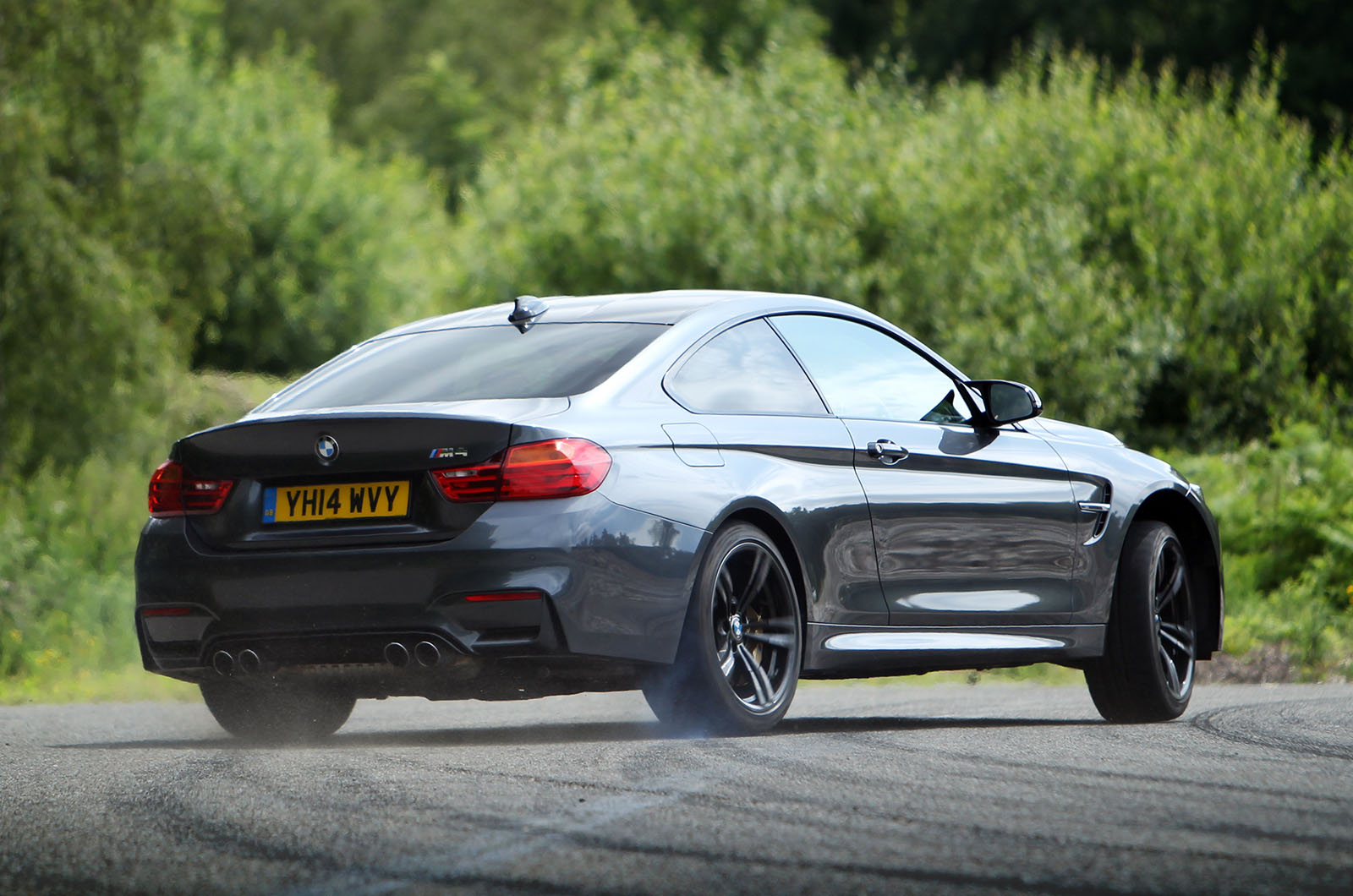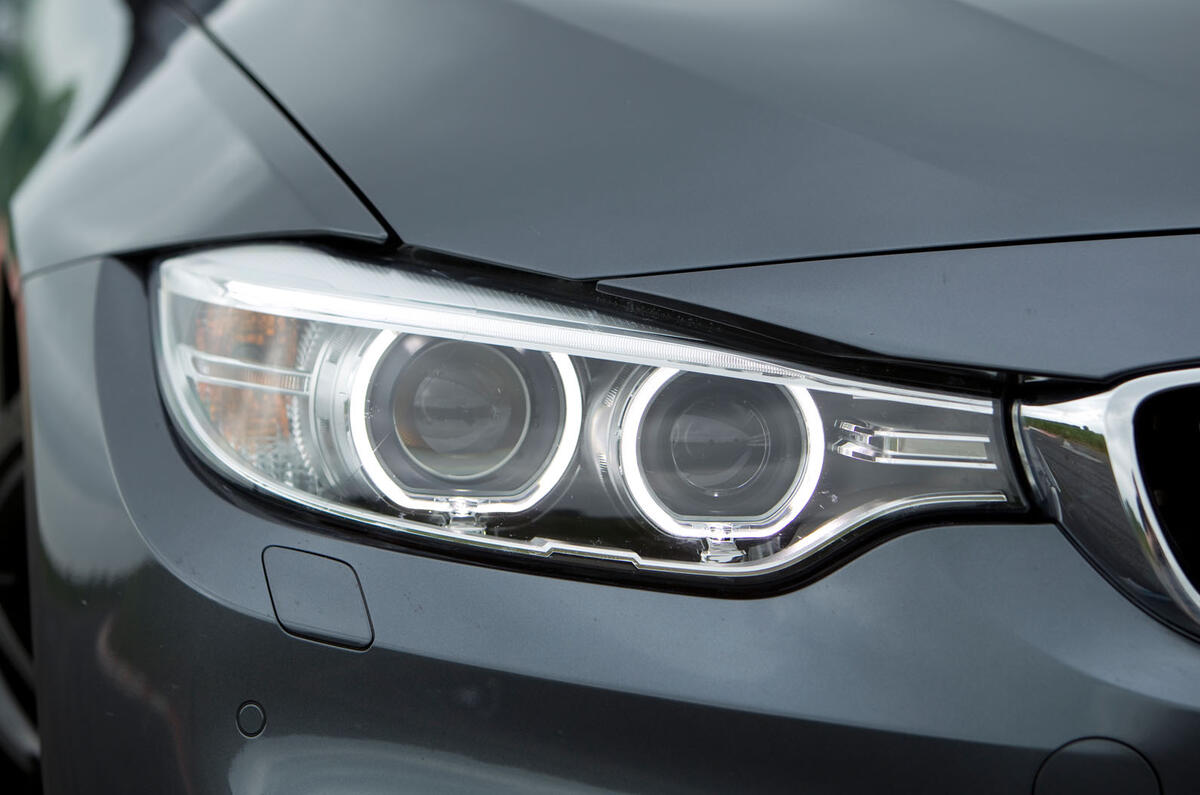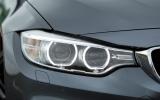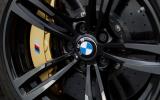Used BMW M4 2014-2020 review
8
Straight six turbo BMW coupe obviously has its charms. Especially at these prices


Published:
17 March 2025
- Introduction
- Reliability
- Design & styling
- Interior
- Engines & performance
- Ride & handling
- MPG & running costs
- Verdict
- Introduction
- Reliability
- Design & styling
- Interior
- Engines & performance
- Ride & handling
- MPG & running costs
- Verdict
Find Used BMW M4 2014-2020 review deals

Other Services

How does a twin-turbocharged six-cylinder BMW M4 for the price of a tidy, reasonable-miles Toyota GR Yaris sound? Well, then, step right up with your £25,000 in hand – or far less for a leggier example.
Sure, these two brilliant driver’s cars are very different beasts, but with twice the number of cylinders, way more power and an extra lashing of premium appeal, Munich’s muscle car could be the more logical purchase.
The M4 is claimed to be capable of sprinting from 0-62mph in 4.3sec
Launched in 2014, the M4 was effectively a continuation of the two-door M3 and joined its four-door sibling in swapping a howling atmo V8 for a creamier straight six.
Displacement devotees shuddered at the loss of the mighty 4.0-litre lump that powered the previous-generation M3, but dropping down two cylinders and adding two turbos paved the way for a healthy uplift in power and, crucially, an extra 111lb ft of torque.
Thus endowed, it had 406lb ft on tap and its peak power output of 425bhp arrived at 5500rpm as opposed to the 8000rpm of its ‘E92’ M3 Coupé forebear.
The M4 could hit 60mph in just 4.1sec too – and it was an absolute slip-road supremo, capable of surging from 30-70mph a whole 3.0sec quicker than the E92 M3.
Part of the reason for the Mk1 M4’s enduring appeal is that it arrived in the hazy days when BMW still offered a manual gearbox in the UK, but honestly the seven-speed dual-clutch automatic is the better wingman for the 425bhp motor.
Back to top
It’s slick and responsive – and full-throttle paddle shifts are highly entertaining. That said, the six-speed manual, while being a little slower, delivers the more interactive experience when hustling it down a twisty cross-country road – as you will often be inclined to do in a car this engaging and composed.
When we road tested the M4, we said: “Select the M4’s angriest settings and you’ll have a car that is adeptly tied down yet compliant over the worst bumps.
“The rear diff can be completely open so it doesn’t push into understeer on corner entry, or it can be completely locked, which turns the car into the kind of adjustable drift machine that M cars have recently become.”
With excellent balance and body control, the M4 has all the key ingredients to stir the soul, but it isn’t totally free of niggles.
The steering, for example, while resoundingly precise and accurate, lacks the raw feel of the Mercedes-AMG C63’s.
For a more visceral experience, we would go for the M4 Competition. A 35k-mile ‘Comp’ is around £5000 more than a comparable standard car, but with 444bhp, a revised suspension set-up and retuned differential and stability control, it’s an even finer driver’s car.
Its rear end is more planted and the vast reserves of torque are delivered in a more linear way to prevent the rear axle from being overwhelmed.
When new, it also had the enticingly intricate 20in ‘snowflake’ wheels and purposeful, track-flavoured sports seats.
If that isn’t enough to scratch your M itch, the hardcore, track-focused GTS model might be more to your taste. Good luck finding one, though, because only 30 right-hand-drive cars were made and it’s priced at around £80,000 today.
Rounding off the first-generation M4 was the 454bhp CS, built to bridge the gap between the Competition and full-bore GTS.
Back to top
It’s a super-refined and well-rounded sports coupé and encompasses the very best of the M4 line-up in one package – and you can get one now for less than £40,000.
It handles better, sounds better, goes harder and works very well on the road, so don’t rule it out if your budget can stretch further.
https://www.drivenbuy.co.uk/autocar?car_make=bmw&car_model=m4-2014-2020&review=used&source=https://www.autocar.co.uk/car-review/bmw/m4-2014-2020
Verdict

Model tested:
Rating: 8
Used BMW M4 2014-2020 review
The biggest, fastest 3-series (of sorts) yet retains the ability to entertain
Good
Storming performance
Controllable track handling
Plush interior
Bad
Expensive options
Doesn’t quite retain the sound quality of some M cars
Size pushes it close to an M6 than an M3
RELIABILITY
Is the BMW M4 reliable?
The BMW M4 is a well made and robust sports coupe, but it does have a number of common faults, some of which serious, which you need to be aware of. The biggest concern will be the crank hub (read more below) which can cause major damage if it fails.
Reliablity goes hand in hand with maintenance and servicing so if you’re after an M4 its worth spending a little extra on one with a decent service history. Maintaining an M4 shouldn’t be an issue considering the plethora of BMW dealers and M car specialists.
Steer clear of modfified examples.
Engine: Crank hub failure can dramatically affect the timing of the engine, leading to a rough idle, a loss of power and – worst case – engine failure due to incorrect valve timing. Check if it’s been replaced and take the car on a long test drive to ensure it is running properly. Fitting a crank bolt capture plate is a sensible preventative measure.
The rocker cover, oil filter housing and sump gaskets can perish, so check for oil drips, and if there’s a distinctive tapping sound when you start the engine from cold, it could mean that the exhaust camshaft has become misaligned – an £800-£1000 repair job.
Turbos: Opinions on the lifespan of the turbos vary but they tend to show signs of wear after 50k miles.
Brakes: New discs and pads cost more than £1000 for a full set. Make sure there aren’t any vibrations under braking on your test drive because this could mean that the discs are warped.
Air conditioning: The condenser can corrode and leak, which means you won’t get a nice icy blast of cool air when you switch the air-con on.
Convertible roof: Drain tubes that disperse water from the folding roof can get blocked and leak inside the car. Check the interior for signs of water damage and ensure the roof folds and opens seamlessly. The folding mechanism is usually unharmed, though.
An owner’s view
Oliver Cooper: “So far, my 2018 M4 Competition has been reliable and, at 50,000 miles, I’ve faced no mechanical issues. It isn’t cheap to maintain, though, and you’ll want to allow £1000-£1500 per year for servicing and tyres. I bought BMW’s extended warranty too: it costs £1500 annually but it’s an official offering and it puts my mind at ease. For the price, nothing comes close in terms of driving dynamics.”
Also worth knowing
BMW also made the M4 DTM Championship edition to celebrate its win in the 2016 Deutsche Tourenwagen Masters. It’s basically an M4 GTS with a funky white paint job – and it’s as rare as the car it is based on, with only a handful of DTM Edition cars sold in the UK.
The M4 was given a minor facelift for 2017, when it gained new LED headlights and brake lights, a wilder front apron for a more aggressive look, new materials, upholstery and trim options inside and an upgraded navigation system.
DESIGN & STYLING
Pros
Muscular and agressive M car looks
Lighter than its E92 predecessor
Cons
Quite a big car for a coupe
No more at V8 motor

There was some significance to the single-digit name change for Munich’s coupe-style M car. It was some 4671mm long, which represented a 53mm increase over the departing M3 coupé.
It was also 180mm longer than the generation before that, the E46, and 326mm – a full a foot and a bit – longer than the original E30 M3. This was a seriously large car.
Nonetheless, BMW said it targeted the weight of the last six-cylinder M3 when it set out to create the M4. Equipped with the standard M DCT seven-speed dual-clutch automatic transmission, our test M4 weighed in at 1610kg.
That was only 10kg lighter than the M3 we tested in 2007, but that was equipped with a manual transmission.
It was also telling how difficult it had become for BMW to retain its trademark 50 percent front, 50 percent rear weight distribution. Removing weight from the rear of the car was easy enough, but it’s rather more expensive to remove it from the front.
Our test car was 52 percent biased over its nose, which was no bad result given that a 3.0-litre straight six engine with two turbochargers had now been strapped to the bulkhead.
Ah, the engine. The capacity had dropped by a full litre over that of its 2007 predecessor, yet power was up from 414bhp to 425bhp, while torque increased from 295lb ft to a fairly whopping 406lb ft.
If you add the Competition Pack the M4 gained an additional 19bhp while its torque remained the same. The newest addition to the range was the M4 CS, which got a peak 453bhp driven through its rear wheels, while heading the range was the limited edition GTS which produced a monstrous 493bhp.
It was developed from 1850rpm and was available until 5500rpm, rather than at the 3900rpm of the V8. The red line has decreased from 8500rpm to 7600rpm in the process, but all of the headline figures were more compelling than they were before.
The fitment of two turbochargers had increased the natural lethargy of the M4’s six-cylinder engine, so BMW had gone to great lengths to mitigate the lag.
The most effective way to do so was to minimise rotating masses and therefore inertia, hence there were two small turbos rather than one big one. They were both single-scroll units.
Twin-scroll turbos split the exhaust gases from the cylinders until they reached the turbine, but you coudn’t really do that between an uneven number of cylinders.
Farther down the line, the driveshaft was constructed from carbonfibre, which made it 40 percent lighter than that of its predecessor, while half-shafts were hollow and therefore spun more easily than on the previous-gen M3.
Elsewhere, other changes deemed worthy of BMW’s M division include a carbonfibre roof and output shaft, aluminium suspension components, an ‘active’ differential (in the form of an electronically controlled mechanical limited-slip differential) and an aluminium bonnet and wings.
INTERIOR
Pros
Brilliant iDrive infotainment system is easy to use and intuitive
Excellent quality and ergonomics throughout
Easy to adapt the car to your preferred setting via the M buttons
Cons
Visibility is average
Access to rear is limited and not that roomy
Stripped out interior of GTS won’t be to everyone’s tastes

If you’d seen the inside of a regular 4 Series, 3 Series or in fact any BMW of late, you’d be familiar with what was going on inside the M4.
One of the M3’s obvious strengths had always been that there was a high-grade 3 Series bubbling just below the surface, and the same was true here.
Fit and finish was predictably high, the ergonomics were superb and, while a sunroof was ruled out by that single-piece carbonfibre-reinforced plastic roof, there was sufficient space up front for the interior ambience not to be smothered by its darkly brooding aesthetic.
In the back, the generous proportions mean even the sportiest version remained a genuine four-seater, while a 445-litre boot kept the practicality score high.
Two buttons – labelled M1 and M2 – on the excellent steering wheel allowed you to assign specific settings from the car’s long menu of adaptive options. Without doing this, you either drove the car in its default mode (pleasant enough) or spent precious journey time tapping at buttons.
BMW’s Professional Media system was a carryover from the rest of the range, and while our familiarity with it certainly negated a totally unbiased first look, it remained one of the best infotainment packages offered anywhere.
The set-up, which was powered by the brilliant iDrive system and viewed via an 8.8-inch widescreen display, came equipped with DAB tuner, Bluetooth, satellite navigation (including excellent real-time traffic information), BMW’s online services and USB connectivity as standard.
Shortcut buttons around the circular iDrive controller kept dial-spinning to a minimum, and there was nothing like a pin-sharp screen resolution to confirm the wisdom of choosing a premium product.
The M4 was also available in two core trims – regular and Competition Pack. The standard M car got dual-zone climate control, cruise control, wi-fi hotspot preparation, front heated seats, all-round parking sensors, auto lights and wipers, LED head, rear and fog lights, and tuned adaptive suspension and active differential.
Opt for the Competition Pack and the M4 got special configurations of the active differential, sports suspension and dynamic stability control, while there were 20in alloys, a louder exhaust and a better audio system included too.
The limited edition BMW M4 GTS was a stripped out track car with a lightweight titanium exhaust, adaptive LED headlights, carbon ceramic brakes, a water injection tank and adjustable front splitter, while inside it got racing harnesses, bucket seats, Alcantara and leather interior, a roll cage and a fire extinguisher.
ENGINES & PERFORMANCE
Pros
Twin-turbo straight-six has character and bags of grunt
Faster through more of the rev range than rivals
Cons
Less responsive than a naturally aspirated lump
Engine noise piped in through the speakers

With the introduction of a turbocharged motor, the way power was delivered was important as the raw figures.
There was no drama with the latter; the M4 was a ridiculously fast car, with launch control ensuring that it passed 60mph from rest, in our hands, in 4.1sec, and 100mph in 8.8sec.
Despite a claimed 155mph limited top speed, it took only 25.2sec to hit 160mph on MIRA’s mile straight, passing a standing quarter mile in 12.3sec and at 120.9mph on the way. That was only a fraction slower – a single tenth over a quarter mile – than a 2012 Porsche 911 GT3 RS.
Power delivery was a different question entirely. BMW had fitted two relatively small turbos – each working on three cylinders – to ensure they spooled up quickly.
The engine was canted to clear the bonnet and had a sophisticated oil return system to avoid starvation and thus cope with the track-day running that was so essential to enjoying this car’s capabilities.
In practice, the turbos may have been small, but they did have an effect. No matter how minimal the lag, there was no question that this was a less responsive engine than a naturally aspirated one and therefore came with less urgency to a throttle prod than any M3 to date.
That fact appears harsh when written down, because on the road, for the most part, it didn’t matter. Yes, there was the tiniest delay between asking for a lot and getting it, but BMW had still crafted an engine that was better than any of its turbocharged peers.
It was silky smooth, revs commendably high and, at higher revs, responded as closely to natural aspiration as it was reasonable to expect.
There was also the argument – and it’s not a bad one – that to obtain the same performance at a given road speed, you’d have to have a naturally aspirated engine in a lower gear and wound much further around its rev range to prove as devastatingly effective as the M4.
In fourth gear, for example, an M4 would go from 30-70mph in 5.4sec. The last generation Audi RS5 couldn’t quite manage that even in third (it took 7.6sec in fourth).
A Mercedes-AMG C63 could match that in third but took 9.1sec to cover the same benchmark in fourth. Put simply, the M4 gave away a degree of response but, in return, was faster through more of the rev range.
Its exhuast note was good, too. Engine noise was amplified through the speakers, and all the more so if you selected the powertrain’s settings that give you more revs if the gearbox was in D and more noise when you’re on the gas.
We tended to leave the powertrain in its sportiest setting and change gear ourselves.
The brakes of our test M4 were the optional carbon-ceramics. Feel and response were good, even from cold – carbon-ceramics have come a long way in that respect – and they showed no sign of letting up after repeated laps of our handling circuit.
On track, they responded better to a gentler initial application of the pedal, which eased weight transfer to the front, than they did to a sharp stab, which more quickly set the ABS alive, resulting in a stopping distance that was no shorter.
RIDE & HANDLING
Pros
Plenty of fun to be had with excellent adjustability to the chassis
Good body control with decent isolation and refinement
Cons
Slightly less incisive handling than previous M cars
Can be pretty firm on the road

All M4s had three settings for the electrically assisted power steering and all had three modes of firmness on the adaptive dampers. UK cars, also come with 19-inch alloy wheels as standard, although the GTS rode on 20ins shod in Michelin Pilot Sport Cup 2 tyres.
Your options were Comfort, Sport and Sport+, but even in Sport+ the BMW was bearable on the smoothest UK roads. Generally, though, we found ourselves picking Comfort on the road and Sport+ on a circuit.
The steering was weightier in its latter setting but felt similar in both, the only difference being that the signals reached you at a different amplitude. That was fine by most of today’s standards, but it would send an E30 driver weeping into his Warsteiner at the inertness of it all.
Control of body movements was very good, though, for a 1600kg car, and the M4 drives with a maturity and isolation that was the logical progression from its predecessor.
Driving an M4 back to back with an BMW M240i brought that into sharp context; the M4 felt like a bruising cruiser next to the more lithe, more agile, more compact M240i, although the M2 muddied those waters somewhat.
In fact, the 2 Series felt more like a 3 Series coupé. The M4, then, was a bit more grown up than the car that immediately preceded it. It had always been that way.
The M4’s road manners may had improved, but this wasn’t a sensible, soulless car. The key ingredients were all present: a front-mounted engine with ample power to overwhelm the rear tyres, and, of course, the team at M division behind it.
Select the M4’s angriest settings and you’d have a car that was adeptly tied down yet compliant over the worst bumps. Body movements were well contained and the M4 turned with decent willingness given its weight.
The rear diff could be completely opened (and usually is under braking) so it didn’t push into understeer on corner entry, or it could be completely locked, which turned the car into the kind of adjustable drift machine.
There was also a track setting on the stability control that allowed a bit of slip angle before gently intervening, which meant you drive the M4 on a neutral steer point, rear wheels happily straightening a line.
BMW M4 news
BMW M4 CS joins Competition Sport line-up
BMW M4 CS joins Competition Sport line-up
BMW M4 facelift brings more power and tech upgrade
BMW M4 facelift brings more power and tech upgrade
BMW M4 CS: next generation to land in 2024
BMW M4 CS: next generation to land in 2024
50 years of BMW M podcast – the men at the very top
50 years of BMW M podcast – the men at the very top
So while there was less incisiveness here than on earlier M cars, there is plenty of fun to be had.
MPG & RUNNING COSTS

With its CO2 emissions rated at 194g/km, the car kept clear of the highest company car tax bands and was around £200 cheaper to tax privately than the outgoing Audi RS5 or Mercedes-AMG C 63.
Our near-30mpg average would have been better if we’d steered clear of any race circuits.
VERDICT

Verdict

Model tested:
Rating: 8
Used BMW M4 2014-2020 review
The biggest, fastest 3-series (of sorts) yet retains the ability to entertain
Good
Storming performance
Controllable track handling
Plush interior
Bad
Expensive options
Doesn’t quite retain the sound quality of some M cars
Size pushes it close to an M6 than an M3
Every time an M3 launched, we lamented the passing of the previous-generation car for one that, yes, was faster, but also proveed to be less incisive and not as rewarding to drive.
With the M4 things were a little different. There was no question that it was a more visceral, engaging car than the previous M3 was at its launch in 2007. The E90 evolved nicely into a car that, when fitted with a Competition Pack, was at least as enjoyable as this M4 was at launch.
But with this generation there was genuine progress. Not only was the M4 more powerful, lighter and cleaner than the old M3, but if you took like-for-like launch examples you’d find an M division car that was also better now than it was then.
Still a note of hesitancy, though. It was pretty large and felt closer to a junior M6 than an M3; and many would likely find an M2 to be more thrilling.
Although the emergence of the M4 CS could redress that balance as it took all that was good about the standard car and mixed it with the best from the GTS.










